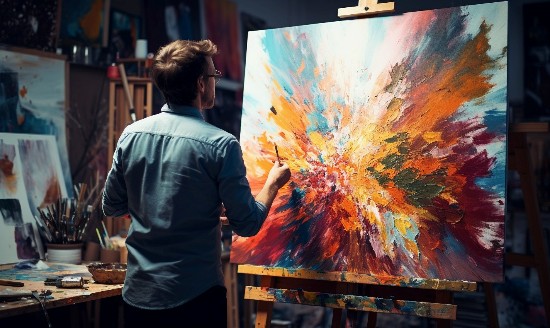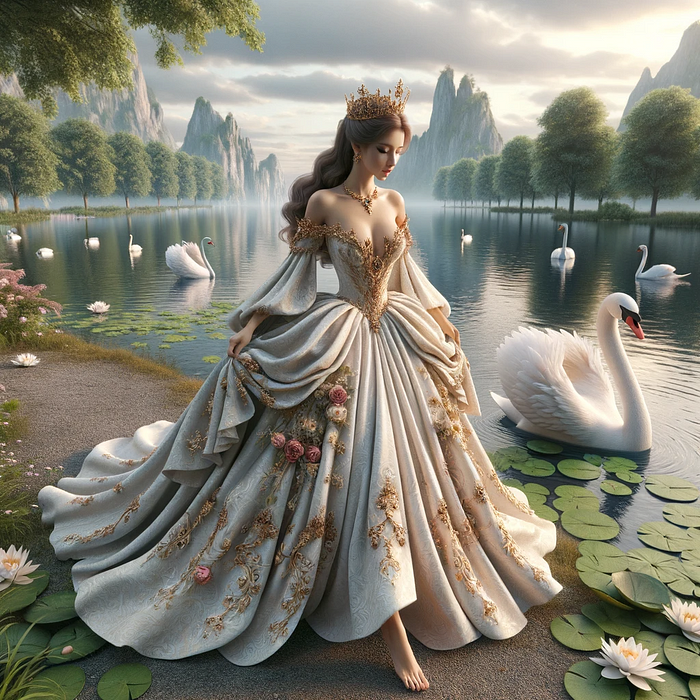
Zac Amos asks the question in this article, “Can artificial intelligence create real art?” Zac is the Features Editor at ReHack. This is his second contribution to 21st Century Tech Blog. He likes to write about AI, cybersecurity, and automation. To read more of his work, follow him on Twitter or LinkedIn.
While generative AI is seen as controversial, it has undeniably impacted artists and the art world. Some claim it can’t create “real art,” while others think the future may prove them wrong.
Why Is AI-Generated Art Controversial?
In 2022, a man named Jason Allen stirred up tremendous controversy with his AI-generated art. He had entered Midjourney-created digital art in a competition at the Colorado State Fair and won. He defeated the other division contestants, claiming the blue ribbon and a few hundred dollars in prize money. Although he claims to have done nothing wrong since he didn’t technically break the rules, there was immediate backlash from others in the competition. The incident soon went viral and thousands on the Internet expressed their opinions.
The situation was among the first of its kind and has become a landmark in the generative AI model debate. Those against the use of the technology claim that the resulting works produced by it are ingenuine and amount to intellectual theft and that generative AI is nothing more than an aggregator of Internet content displayed as art. Those for the use of generative AI believe otherwise, stating that its arrival pushes the boundaries making art more accessible.
Can Generative AI Overcome the Controversy?
Using reinforcement learning with generative AI could help to calm the waters. Instead of relying on static data sets, using reinforcement learning, a form of machine learning would lead to evolved new experiences. This would result in generative AI that uses ethical principles and would make it easier to reward art produced this way without concerns over copyright infringement.
Instead of seeing algorithms as competition for human artists, people would grow to appreciate the democratization of art making the creation of artistic works more accessible for more people. If the algorithms respected moral and legal boundaries, then acceptance and use would be more likely.
In the end, it is humans who will have to create the rules that govern ethical Generative AI. After all, an algorithm is only as good as its training data and feedback.
What Is Generative AI’s Place in the Art World?
While many people think generative AI has no place in the artistic community, its presence is undeniable. After all, what does “real art” even mean? Most lasting changes in creative spaces come from controversial styles and methods. A good example of resistance to change is that there are still people who don’t believe digital art has validity.
That’s why a growing number of people see generative AI creations as legitimate forms of art. There’s something to be said about its creative capabilities. And even though generative models are aggregators and rely on human creations as models, they still create something unique. Is it different from tracings or mirroring? Even the Mona Lisa has been copied by a student of Leonardo da Vinci. Does that make the copy illegitimate art?
How Have Artists Responded to Generative AI Art?
The world of art and graphics design and job opportunities are shrinking as traditional media sees declining numbers and revenue. These are jobs that are at the highest risk for future AI takeovers. The algorithms are winning because they produce end products much faster and cheaper than any human can.
That’s why traditional and digital artists feel threatened. To them, it signals the downfall of artistry and creativity. Although 43% of American adults believe in the revolutionary aspects of AI technology, not as many are convinced that art generated this way is legitimate. And considering the Colorado State Fair competition results, the fear of lost jobs from the use of generative Art isn’t unfounded. While some artists who entered the competition poured dozens of hours and hundreds of dollars into their creations, the winner only had to type one sentence. And since it’s technically possible to copyright the art generated by AI for commercial use, it is understandable that many artists feel their livelihoods are at stake.
How Will Generative AI Change the Art World?
It already is with the recent arrival of ChatGPT and Dall-E 3. The controversy will remain but likely generative AI will become accepted as an extension of digital graphic design. And ultimately, art may become a synthesis of human and AI expression. Arguably, it will become hyper-human since people will create the training data for the algorithms. Already, in a recent study, humans could only tell the difference between generative AI-produced art and that created by humans about half of the time.
Can you tell if the image below was human or AI-created?

Generative AI Is Here to Stay
Although artists aren’t may not be fond of this new medium for creating art, it is making an immediate impression on those who see the results. And it is allowing people to create fantastic images when they never thought of themselves as being artistic. With proper guidance and ethical guardrails in place, Generative AI should grow to become one of the most impactful technologies that the art world and artists have ever seen.
Editor’s Note: In the last week OpenAI, the creator of ChatGPT and Dall-E 3 announced that Midjourney and LeonardoAI, two application programming interfaces (APIs) that charge for their use will no longer be needed because ChatGPT Plus will render AI art without them. Describe the image and Dall-E 3 will create it. But you will need a subscription to ChatGPT Plus.








